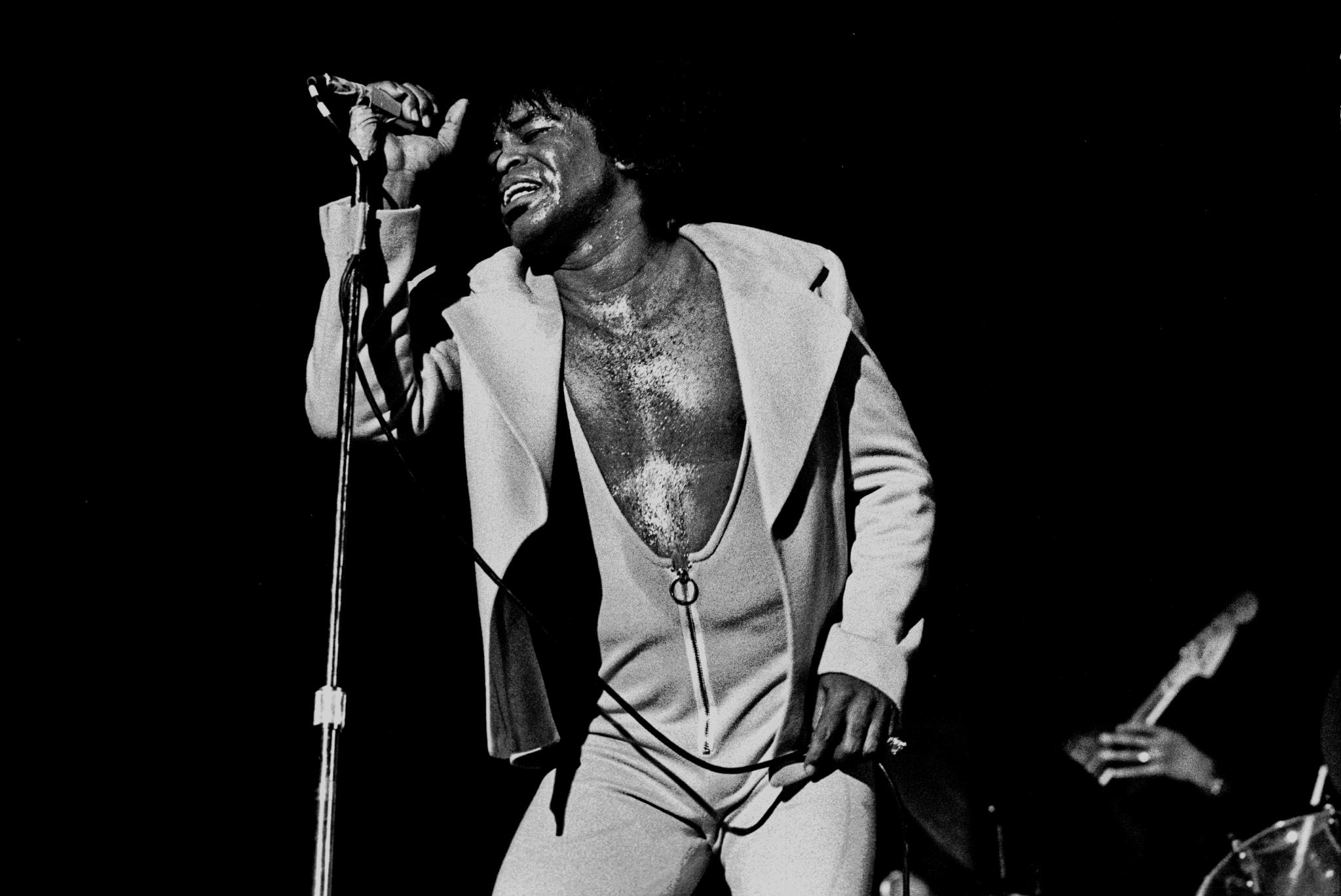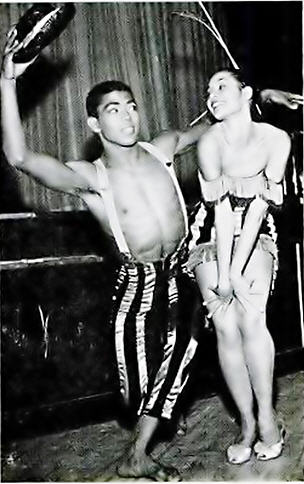|
House Dance International
House Dance International (“HDI”) is an annual street dance festival based in New York City that highlights the art forms of house dance, vogue, hustle, waacking and experimental, all of which are performed to house music or derivatives of electronic dance music. The three-day festival consists of a group choreography contest, freestyle competitions (i.e., "battles"), film screenings, seminars, workshops and parties. Established in 2007, HDI was the only event of its kind that exclusively focuses on the dance forms associated with house music culture (as compared to hip-hop dance forms such as b-boying, popping, locking, krumping, etc.). Mission HDI represents a New York-based mission to bring together the various individuals and organizations that have played a role in the creation and development of house dance culture. Dating back to the 1970s in New York City and Chicago, the culture grew out of the clubs and social networks of the black and Latino gay community. Notewor ... [...More Info...] [...Related Items...] OR: [Wikipedia] [Google] [Baidu] |
Street Dance
Street dance is an umbrella term for a large number of social dance styles such as: breakdancing, popping, Locking (dance), locking, house dance, waacking etc. Social dance styles have many accompanying steps and foundations, created organically from a culture, a moment in time, a way of life, influenced by natural social interaction. A street dance is a vernacular dance in an urban context. Vernacular dances are often improvisational and social dance, social in nature, encouraging interaction and contact with spectators and other dancers. These dances are a part of the vernacular culture of the geographical area that they come from. History Street dance evolved during the 1970s outside dance studios in any available open space. This includes streets, dance parties, block parties, parks, school yards, raves, and nightclubs. This is partly because African American and Latino people who created the style were generally not accepted into dance studios because of their race. A sig ... [...More Info...] [...Related Items...] OR: [Wikipedia] [Google] [Baidu] |
The Loft (New York City)
The Loft was the location for the first underground dance party (called "Love Saves the Day") organized by David Mancuso, on February 14, 1970, in New York City. Since then, the term "The Loft" has come to represent Mancuso's own version of a non-commercial party where no alcohol, food, nor beverages are sold. Mancuso's vision of a private party is similar to, and inspired by, the rent party and house party. Unlike conventional nightclubs or discotheques, attendance is by invitation only. In the late 1970s, Mancuso abandoned the generally accepted and expected practice of beatmatching, preferring to play songs in their entirety on his renowned audiophile-quality sound system. The Village Voice wrote that Mancuso's sound system was the best in New York and even described him as "more of a party engineer than a DJ."Tim Lawrence A ... [...More Info...] [...Related Items...] OR: [Wikipedia] [Google] [Baidu] |
Drum And Bass
Drum and bass (also written as drum & bass or drum'n'bass and commonly abbreviated as D&B, DnB, or D'n'B) is a genre of electronic dance music characterized by fast breakbeats (typically 165–185 beats per minute) with heavy bass and sub-bass lines, samples, and synthesizers. The genre grew out of the UK's rave scene in the 1990s. The popularity of drum and bass at its commercial peak ran parallel to several other UK dance styles. A major influence was the original Jamaican dub and reggae sound that influenced jungle's bass-heavy sound. Another feature of the style is the complex syncopation of the drum tracks' breakbeat. Drum and bass subgenres include breakcore, ragga jungle, hardstep, darkstep, techstep, neurofunk, ambient drum and bass, liquid funk (a.k.a. liquid drum and bass), jump up, drumfunk, sambass, and drill 'n' bass. Drum and bass has influenced many other genres like hip hop, big beat, dubstep, house, trip hop, ambient music, techno, jazz, rock and pop. D ... [...More Info...] [...Related Items...] OR: [Wikipedia] [Google] [Baidu] |
Broken Beat
Broken beat (sometimes referred to as "bruk") is an electronic dance music genre characterized by syncopated beats and tense rhythms, including staggered or punctuated snare beats and/or hand claps. It has been heavily influenced by styles such as jazz-funk and R&B. Artists in this area typically emerged from drum and bass, house, hip hop, techno or acid jazz scenes. History Broken beat first appeared in the 1990s and was pioneered by Bugz in the Attic, IG Culture, and the release of the 4hero album, ''Two Pages,'' was influential on the emerging sound and scene. John Bush from All Music called it "about as fusion-soaked as it gets." Appearing in the western parts of London, the genre is also referred to as ''West London'', mainly because Goya Music's offices were in London's Ladbroke Grove, W11, as were most of the participating artists' studios. Bugz in the Attic's Neon phusion, Afronaught & IG Culture are credited with kick-starting the scene with numerous releases un ... [...More Info...] [...Related Items...] OR: [Wikipedia] [Google] [Baidu] |
Nu Jazz
Nu jazz (also known as jazztronica, or future jazz) is a genre of jazz and electronic music. The music blends jazz elements with other musical styles, such as funk, electronic music, and free improvisation.Definition from Sergey Chernov, June 7, 2002, in The St. Petersburg Time Overview Nu jazz typically ventures further into the electronic territory than does its close cousin, acid jazz. Nu jazz can be very experimental in nature and can vary widely in sound and concept. The sound departs further from its blues roots than acid jazz does, and instead explores electronic sounds and ethereal jazz sensualities. "The star of Nu jazz is the music itself and not the individual dexterity of the musicians." See also * |
Jacking
Jacking, Jackin’, or the jack is a freestyle dance move in which the dancer ripples their torso back and forth in an undulating motion. It emerged within the context of Chicago house music in the 1980s. Origins and interpretations The style is said to have developed in Chicago nightclubs like the Warehouse and the Power Plant, where house pioneer Frankie Knuckles was resident DJ, and Ron Hardy's Music Box, during the early 1980s.Tim Lawrence: Acid ⎯ Can You Jack? (2005). Music journalist has argued that just as |
House Music
House is a music genre characterized by a repetitive four-on-the-floor beat and a typical tempo of 120 beats per minute. It was created by DJs and music producers from Chicago's underground club culture in the late 1970s, as DJs began altering disco songs to give them a more mechanical beat. House was pioneered by African American DJs and producers in Chicago such as Frankie Knuckles, Ron Hardy, Jesse Saunders, Chip E., Steve "Silk" Hurley, Farley "Jackmaster" Funk, Marshall Jefferson, Phuture, and others. House music expanded to other American cities such as New York City and became a worldwide phenomenon. House has had a large effect on pop music, especially dance music. It was incorporated by major international pop artists including Whitney Houston, Janet Jackson (" Together Again"), Kylie Minogue, Pet Shop Boys and Madonna ("Vogue"), but also produced some mainstream hits on its own, such as "French Kiss" by Lil Louis, " Show Me Love" by Robin S. or "Push the Feeling On" ... [...More Info...] [...Related Items...] OR: [Wikipedia] [Google] [Baidu] |
Hustle (dance)
The hustle is a catch-all name for some disco dances which were extremely popular in the 1970s. Today it mostly refers to the unique partner dance done in ballrooms and nightclubs to disco music.Shell, Niel and John P. Nyemchek, ''Hustle'', Nyemchek Dance Centre, Pearl River, New York, 1999. It has some features in common with mambo, salsa and swing dance. Its basic steps are somewhat similar to the discofox, which emerged at about the same time and is more familiar in various European countries. In the 1970s there was also a line dance called ''the hustle''. Modern partner hustle is sometimes referred to as New York hustle, however, its original name is the Latin hustle. People still do this dance around the world today. History Funky Hustle Early hustle was a 5-step count with no turns, created by Puerto Rican teenagers in late 1972 as a direct result of Puerto Rican Elders objecting to young teenagers doing a grinding slow dance known as the 500. Created in the South ... [...More Info...] [...Related Items...] OR: [Wikipedia] [Google] [Baidu] |
Vogue (dance)
Vogue, or voguing, is a highly stylized, modern house dance originating in the late 1980s that evolved out of the Harlem ballroom scene of the 1960s. It gained mainstream exposure when it was featured in Madonna's song and video "Vogue" (1990), and when showcased in the 1990 documentary '' Paris Is Burning'' (which went on to win the Grand Jury Prize at the 1991 Sundance Film Festival). In its modern form, this dance has become a global phenomenon that continues to evolve both stylistically and demographically. History This style of dance arose from Harlem ballroom cultures, as danced by African-American and Latino gay and trans people, from the early 1960s through the 1980s. The Harlem Renaissance shaped a distinctly Latino and African American LGBTQ culture in Harlem from 1920 to 1935, which included advancement in literature, arts and music and demonstration that aspects of identity like race, gender and sexuality can be fluid and intersecting. The Balls that began during ... [...More Info...] [...Related Items...] OR: [Wikipedia] [Google] [Baidu] |
Alvin Ailey
Alvin Ailey Jr. (January 5, 1931 – December 1, 1989) was an American dancer, director, choreographer, and activist who founded the Alvin Ailey American Dance Theater (AAADT). He created AAADT and its affiliated Alvin Ailey American Dance Center (later Ailey School) as havens for nurturing Black artists and expressing the universality of the African-American experience through dance. A gay man, his work fused theater, modern dance, ballet, and jazz with Black vernacular, creating hope-fueled choreography that continues to spread global awareness of Black life in America. Ailey's choreographic masterpiece ''Revelations'' is recognized as one of the most popular and most performed ballets in the world. On July 15, 2008, the United States Congress passed a resolution designating AAADT a "vital American cultural ambassador to the World." That same year, in recognition of AAADT's 50th anniversary, then Mayor Michael Bloomberg declared December 4 "Alvin Ailey Day" in New York City, ... [...More Info...] [...Related Items...] OR: [Wikipedia] [Google] [Baidu] |
Salsa (dance)
Salsa is a latin dance, associated with the music genre of the same name, which was first popularized in the United States in the 1960s in New York City. Salsa is an amalgamation of Cuban dances, such as mambo, pachanga and rumba, as well as American dances such as swing and tap. Origin Salsa dancing — as a dance to accompany salsa music — was popularized in the 1960s. It was primarily developed by Puerto Ricans and Cubans living in New York in the late 1960s and early 1970s. Different regions of Latin America and the United States (including countries in the Caribbean) have distinct salsa styles, such as Cuban, Puerto Rican, Colombian, and New York styles. Salsa dance socials are commonly held in nightclubs, bars, ballrooms, restaurants, and outside, especially when part of an outdoor festival. Some debate exists about the exact origins of the name "salsa". Some claim it originated from something musicians shouted while playing to generate excitement. The term was po ... [...More Info...] [...Related Items...] OR: [Wikipedia] [Google] [Baidu] |






